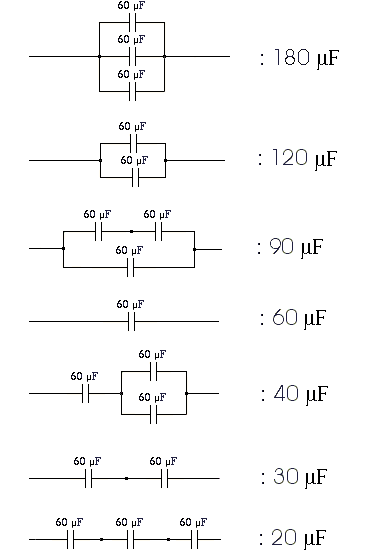1.8 KiB
| id | title | challengeType | forumTopicId | dashedName |
|---|---|---|---|---|
| 5900f4081000cf542c50ff1a | Problem 155: Counting Capacitor Circuits | 5 | 301786 | problem-155-counting-capacitor-circuits |
--description--
An electric circuit uses exclusively identical capacitors of the same value C.
The capacitors can be connected in series or in parallel to form sub-units, which can then be connected in series or in parallel with other capacitors or other sub-units to form larger sub-units, and so on up to a final circuit.
Using this simple procedure and up to n identical capacitors, we can make circuits having a range of different total capacitances. For example, using up to n = 3 capacitors of 60 μF each, we can obtain the following 7 distinct total capacitance values:

If we denote by D(n) the number of distinct total capacitance values we can obtain when using up to n equal-valued capacitors and the simple procedure described above, we have: D(1) = 1, D(2) = 3, D(3)=7, \ldots
Find D(18).
Reminder: When connecting capacitors C_1, C_2 etc in parallel, the total capacitance is C_T = C_1 + C_2 + \cdots, whereas when connecting them in series, the overall capacitance is given by: \frac{1}{C_T} = \frac{1}{C_1} + \frac{1}{C_2} + \cdots.
--hints--
capacitanceValues() should return 3857447.
assert.strictEqual(capacitanceValues(), 3857447);
--seed--
--seed-contents--
function capacitanceValues() {
return true;
}
capacitanceValues();
--solutions--
// solution required